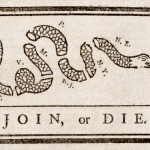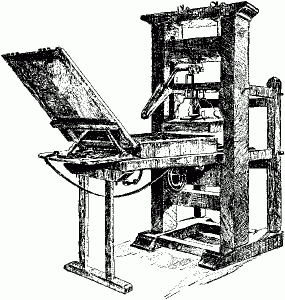As we researched how and when print advertising began we found many reputable resources that had a different first print advertising fact. Some say it wasn’t until the 19th century that it arrived in the New World, but in actuality it seems it may have been 4000 BC when some form of print advertising came to be.
Thousands of years ago the Egyptians carved public notices into stone and steel. But 2000 years earlier Indians drew on cave walls as a way of communicating their story. Some experts believe that petroglyphs were the first form of advertising. The basic definition of advertising is a form of communication used to persuade change or to continue an audience’s actions. As print advertising progressed through time it became primarily used to persuade actions in politics, ideologies, and commercial activities.

Print advertising has dramatically changed throughout history. From the first handbill printed in England in 1477 by printer William Caxton. By the 18th century citizens were bombarded with advertisements. Streets were lined with signs on walls and billboards draped over people’s shoulders, and merchants chanted about their products and services from their street side carts. Almost every city’s surface displayed an advertisement of some sort. The printing press had been substantially updated and could produce print ads quickly, and newspapers became a necessity for citizens to keep abreast of current events.
The good, the bad, and the ugly of early print advertising
 With the invention of paper and its journey to America, advertising found a new transportable method of communication. Paper became useful in newspapers, handbills, flyers, posters, and many more communications. Benjamin Franklin used his Pennsylvania Gazette to voice his opinions, under an alias of course, printed the first political campaign ad, and paved the way for future advertising.
With the invention of paper and its journey to America, advertising found a new transportable method of communication. Paper became useful in newspapers, handbills, flyers, posters, and many more communications. Benjamin Franklin used his Pennsylvania Gazette to voice his opinions, under an alias of course, printed the first political campaign ad, and paved the way for future advertising.
Until the development and subsequent upgrade to the printing press the production of a quality print advertisement was ineffective. Even with the upgrades an advertiser was limited to layout and image restrictions. Images had to be hand-drawn and had to fit into an exact space. An advertiser was also limited to the number of consumers that were able to read and consume the information accurately. Cities were usually small and did not offer a delivery method outside of town.  Prior to establishment of the Federal Trade Commission’s regulations in 1914 advertising was in many instances crude, one-sided, slanderous, racist, and included false information. The passing of the Federal Trade Act affixed government regulations to any in print advertising form in an effort to protect consumers and promote competition.
Prior to establishment of the Federal Trade Commission’s regulations in 1914 advertising was in many instances crude, one-sided, slanderous, racist, and included false information. The passing of the Federal Trade Act affixed government regulations to any in print advertising form in an effort to protect consumers and promote competition.
To learn more about the growth of print advertising after the 18th century and how it changed America, visit our blog post How It All Began – the birth of print advertising gains traction.
